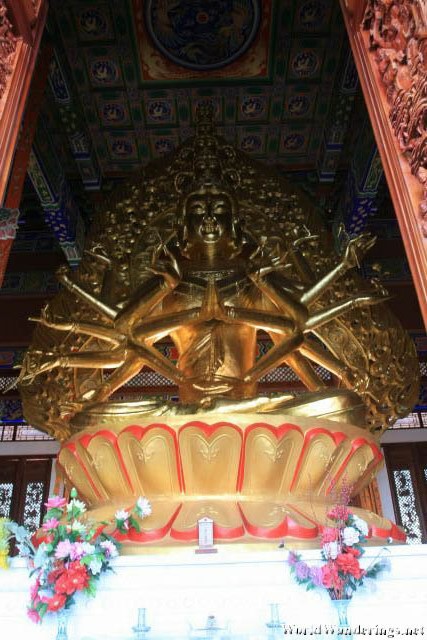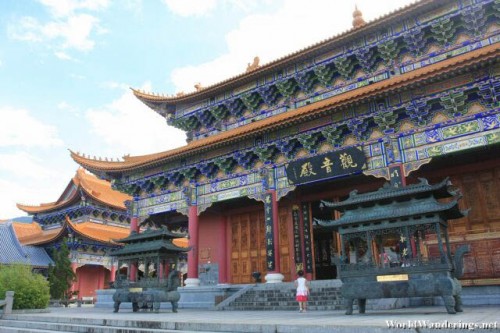It seems that within the gates of the Chongsheng Temple, the halls here seem more impressive. Important figures from Buddhism are housed here, which is probably natural since this is a center of Buddhism for this area. Back in Chongsheng Temple’s heyday, Chongsheng Temple used to be the royal temple for the kingdom of Dali. It was a bit strange that the royal temple was built outside the city walls but probably it was because there was no more space there for a grand temple. It would have been interesting to see them build a temple as big as this within the town, similarities to the Forbidden City in Beijing would be even more striking.
The next hall in my tour of Chongsheng Temple is the Eleven Face Avalokiteshvara Hall or Guanyin Temple. For the sake of brevity I shall refer to the Avalokiteshvara as Guanyin, his Chinese name. Guanyin is a bodhisattva or enlightened being who embodies compassion. It is commonly depicted as male or female, though I think in Chinese temples she tends to be more female. Interesting story is that Guanyin worries about the plight of mortals so much that his head split into eleven pieces, taking pity, Buddha provides him with eleven heads, more ears to listen, for which the hall is built for. Despite having more heads, his arms split into multiple piece but Buddha granted him a thousand arms to help people.
[xmlgm {http://www.worldwanderings.net/kml/ChongshengTemple.kmz} zoom=19]

